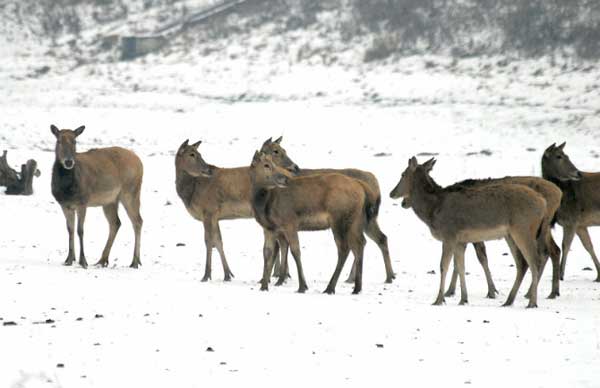Running wild
By Deng Zhangyu ( China Daily ) Updated: 2014-01-16 07:32:37
 |
|
Photo provided to China Daily |
The 1,567-hectare reserve was established in 1993, aiming to return the deer into the wild. Adjacent to the reserve is China's finless porpoise reserve that shares the same waters with the deer reserve. The marshlands and reeds make it a perfect habitat for milu. Thousands of years ago, they ran wild in this area.
During the Spring and Autumn Period (770-476 BC), documents show that large numbers of the deer roamed the wetlands along the Yangtze River. And some were even raised in captivity for hunting.
Over-hunting, climate change and the shrinking of the wetlands meant the deer gradually disappeared from the wild. After a century living in captivity overseas, they have finally been returned to China and released into the wild.
"There are three wild herds in and outside our reserve. Milu can swim and run fast, so they always go from one herd to another," Li says.
There was only one herd living in the reserve's core zone. A devastating flood in 1998 inundated the reserve. Some escaped, swimming across the Yangtze River upstream to near East Dongting Lake. And some fled to a forest not far away from the reserve and survived there.
Inside the vast reserve, there were fewer than 30 workers. Li Pengfei was the first to conduct research on milu released in the reserve, starting in 1993.
Li patrolled the reserve at least twice a week, observing the animals' behavior and collecting information. He has saved five deer that were either deserted by their mothers or became lost from their herd.
For more Eco China, here
|
|
|
|
|
|
|
|




























 Raymond Zhou:
Raymond Zhou: Pauline D Loh:
Pauline D Loh: Hot Pot
Hot Pot Eco China
Eco China China Dream
China Dream China Face
China Face






